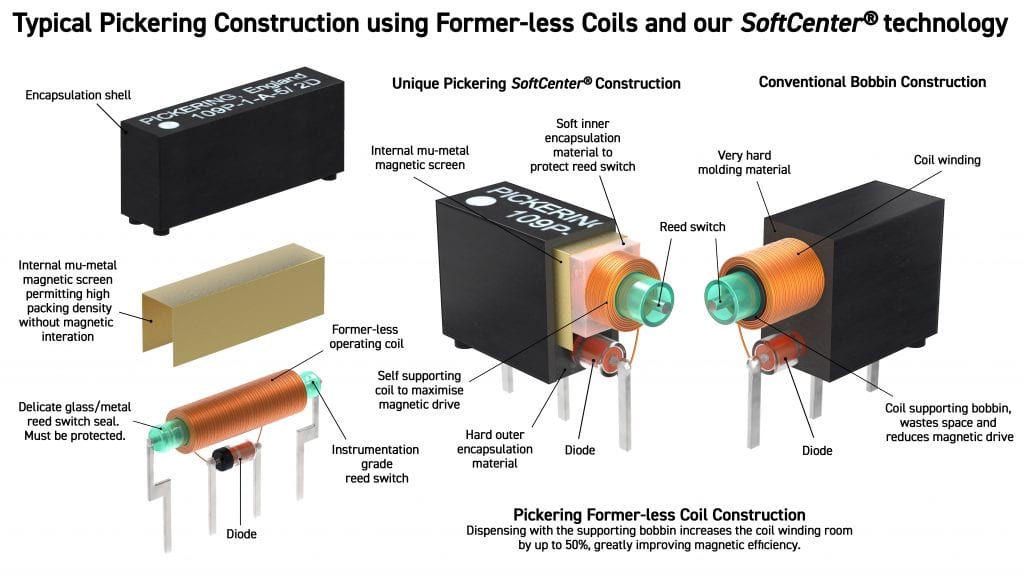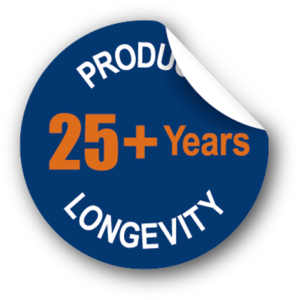How do reed relays compare with other switching technologies?
The reed relay was invented in 1936 by Bell Telephone Laboratories. Since that time, it has gradually evolved from very large, relatively crude parts to the small, ultra-reliable parts we have today. Production methods and quality systems have improved a great deal over that time, and costs have been radically reduced.
Pickering Electronics, an established reed relay manufacturer, was founded in 1968, and even then some were saying that these electromechanical devices would have a limited lifetime. Instead, the market for high-quality reed relays has increased into areas that were inconceivable in those days.
Our previous post answered the question, “What is a reed relay?” This article delves into the differences between reed relays and other switching technologies.
Electromechanical Relays vs Reed Relays
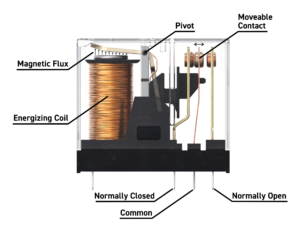
Electromechanical relays (EMRs) are widely used in industry for switching functions and often can be the lowest cost relay solution available to users. Electronic manufacturers have made huge investments in manufacturing technology to make the relays in high volumes.
There are some notable differences between reed relays and EMRs which users should be aware of:
- Reed relays generally exhibit much faster operation (typically between a factor of 5 and 10) than EMRs. The speed differences arise because the reed switch blades are simpler, lighter and travel less distance compared to EMRs.
- Reed relays have hermetically sealed contacts, which lead to more consistent switching characteristics at low signal levels and higher insulation values in the open condition. EMRs often are enclosed in plastic packages that give a certain amount of protection, but the contacts over time are exposed to external pollutants, emissions from the plastic body, and oxygen and sulfur ingress. Also, when switching in an environment where flammable vapors could be present, such as an airport flight line, the use of EMRs could cause an explosion when hot switching.
- Reed relays have longer mechanical life (under light load conditions) than EMRs, typically of the order of between a factor of 10 and 100. The difference arises because of the advantageous absence of moving parts and the contacts being encapsulated in reed relays compared to EMRs.
- Reed relays require less power to operate the contacts than EMRs.
- EMRs are designed to have a wiping action when the contacts close, which helps to break small welds and self-clean their contacts. This does help lead to higher contact ratings but also may increase wear on the contact plating.
- EMRs can have much higher current ratings than reed relays because they use larger contacts; reed relays are usually limited to carry currents up to 3 A. Because of their larger contacts, EMRs also often can better sustain current surges.
- EMRs typically have a lower contact resistance than reed relays because they use larger contacts and can normally use materials of a lower resistivity than the nickel iron used in a reed switch capsule.
- High voltages can be reached in EMRs, although this will increase the size of the relay. Comparably, the standoff voltage in a vacuum switch (such as those in reed relays) will be 10-20 times greater than a similar EMR with the contact gap in air.
Reed relays and EMRs both behave as excellent switches. The use of high-volume manufacturing methods often makes EMRs lower cost than reed relays, but within the achievable ratings of reed relays, the reed relay has much better performance and longer life.
Solid State Relays vs Reed Relays
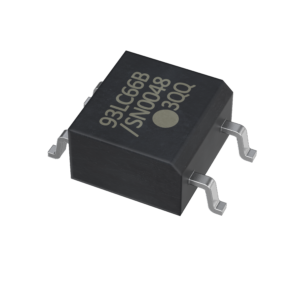
The term “solid-state relay” refers to a class of switches based on semiconductor devices. There is a large variety of these switches available. Some, such as PIN diodes, are designed for RF applications, but the most commonly found devices that compete with reed relays are based on FET switches. A solid-state FET switch uses two MOSFETs in series and an isolated gate driver to turn the relay on or off. There are some key differences compared to a reed relay:
- All solid-state relays have a leakage current associated with their semiconductor heritage; consequently, they do not have as high an insulation resistance. The leakage current is nonlinear. The on-resistance also can be nonlinear, varying with load current.
- There is a compromise between capacitance and path resistance. Solid state relays with low-path resistance have a large capacitive load (sometimes measured in nF for high-capacity switches), which restricts bandwidth. As the capacitive load is decreased, the FET size must decrease, and the path resistance increases. The capacitance of a solid-state FET switch is considerably higher than a reed relay.
- Reed relays are naturally isolated by the coil from the signal path; solid-state relays are not, so an isolated drive has to be incorporated into the relay.
- Solid-state relays can operate faster and more frequently than reed relays.
- Solid-state relays can have higher power ratings.
- In general, reed relays behave much more like perfect switches than solid-state relays since they use mechanical contacts.
- For high voltage applications, solid-state relays can match reed relays, although tend to be more expensive, suffer poor leakage current and the highest working voltage would be around 1.5kV.
MEMS Switches
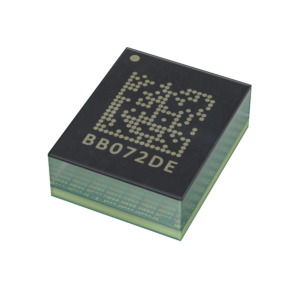 MEMS switches are fabricated on silicon substrates where a three-dimensional structure is micro-machined to create a relay switch contact. This contact can then be deflected by a magnetic or electrostatic field.
MEMS switches are fabricated on silicon substrates where a three-dimensional structure is micro-machined to create a relay switch contact. This contact can then be deflected by a magnetic or electrostatic field.
Historically, RF MEMS switches have been a very promising technology, although reliability has been one of the biggest hurdles to overcome to reach commercial viability. In recent years this has started to be rectified, after extensive research and the development of new metal alloys.
With the recent advances in RF MEMS technology, the commercial viability has increased, although there are still some key differences between reed relays and MEMS switches:
- MEMS switches tend to be created for specific applications and niches, rather than being produced reliably in larger quantities, so costs can be quite high.
- MEMS based RF switches have fast operate speeds at around 50μs, comparable to Pickering’s fastest reed relays and around 60 times faster than an EMR.
- One of the reasons they are fast is due to their small size. This has some positives, such as reducing board space, but it also means that the contact area of the switch is very small. This means that MEMS relays are not recommended for hot switching environments and are liable to partial weld issues within the switch.
- Operating within the appropriate parameters, MEMS switches should last as long as reed switches; over 1 billion operations.
- Like reed relays, MEMS can be fabricated so the switch part is hermetically sealed (either in a ceramic package or at a silicon level), which generally leads to consistent switching characteristics at low signal levels.
- Currently, MEMS switches are not appropriate for high voltage applications, only reaching around 100V.
The Future for Reed Relays
In more recent years, there has been a constant quest for further miniaturization. Pickering are leading the charge in this field with our 4mm range of Ultra High-Density relays.
Smaller parts have required more sophisticated methods, including lasers, to create the glass-to-metal hermetic seal of the reed switch capsule. Lasers also are sometimes used to adjust the sensitivity of reed switches by slightly bending the switch blades to change the size of the contact gap. Contact plating materials and methods also have changed, particularly in the areas of cleanliness, purity of materials, and the reduction of microscopic foreign particles or organic contamination, resulting in superb low-level performance.
Reed-relay operating coils also have become smaller and more efficient thanks to advanced coil-winding techniques with controlled layering of the coil-winding wire. In the case of Pickering Electronics’ relays, the coil-winding bobbin also has been dispensed with in favor of former-less coils, which has reduced package sizes. While reed relays are a relatively mature technology, such evolution will continue in the future.
A reed relay, in many ways, is a near perfect switching element with a simple metallic path. A well-designed and correctly used part will give a long and reliable life. Reed relays will certainly be around for many years to come.


